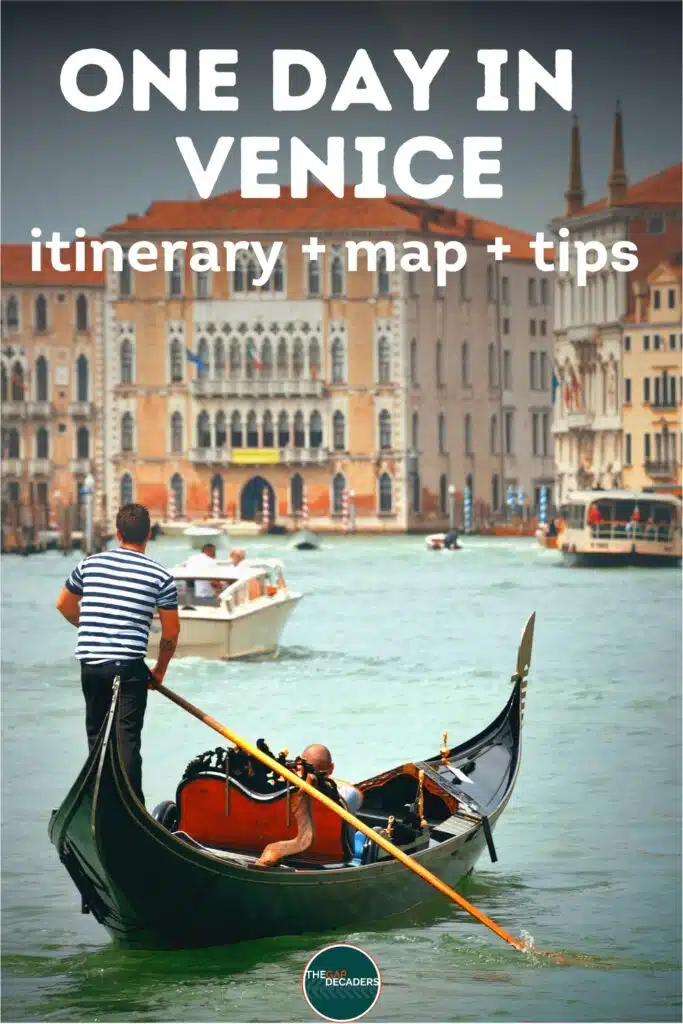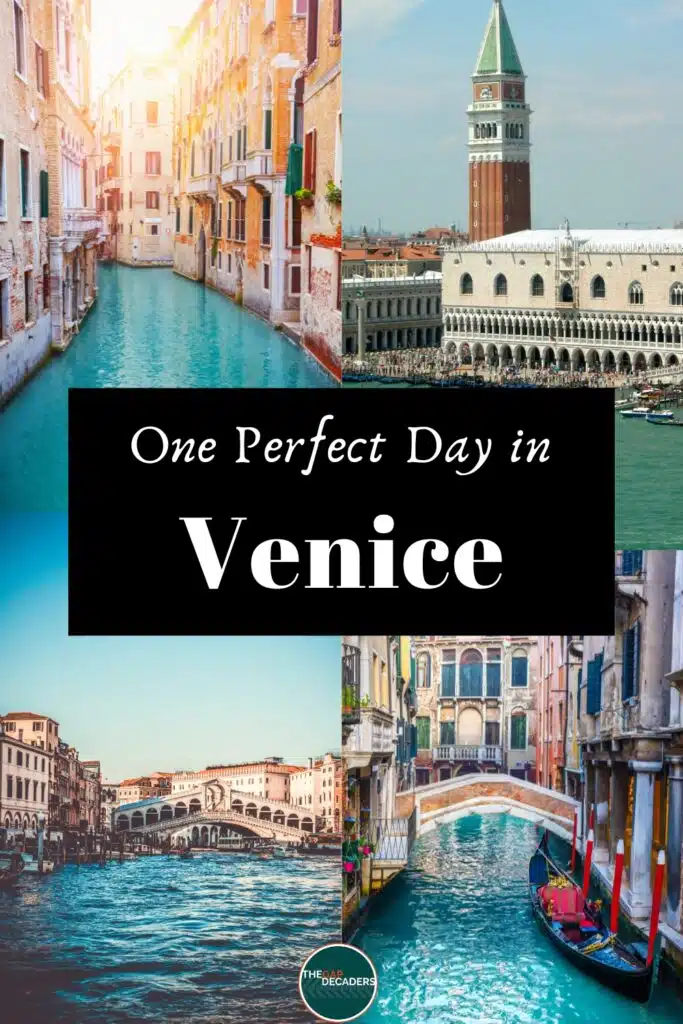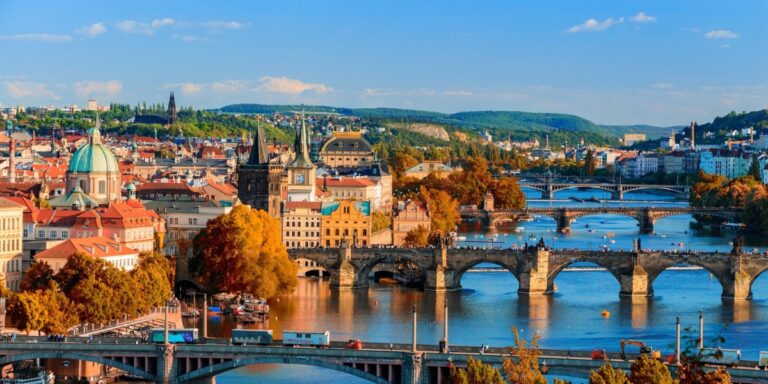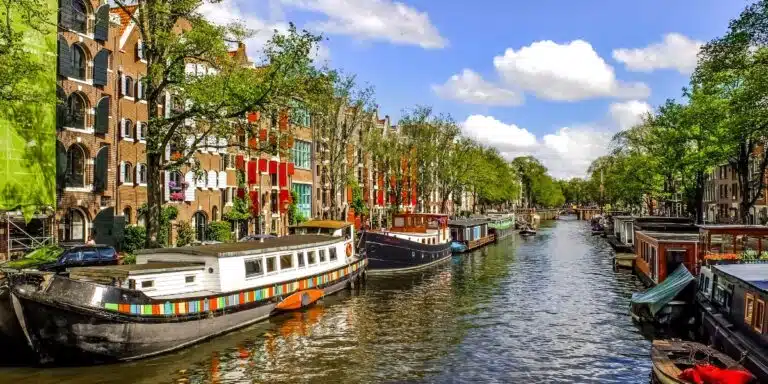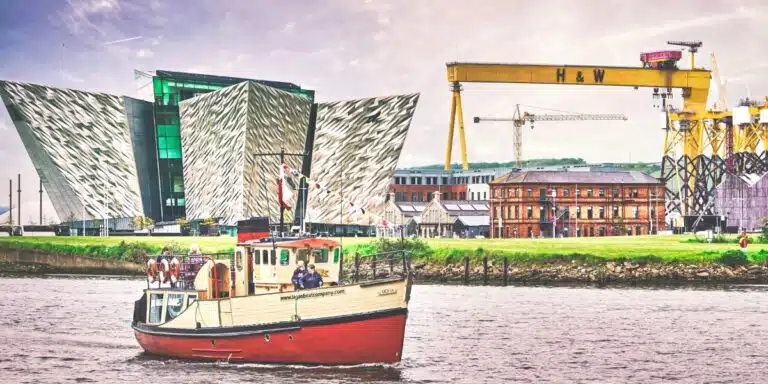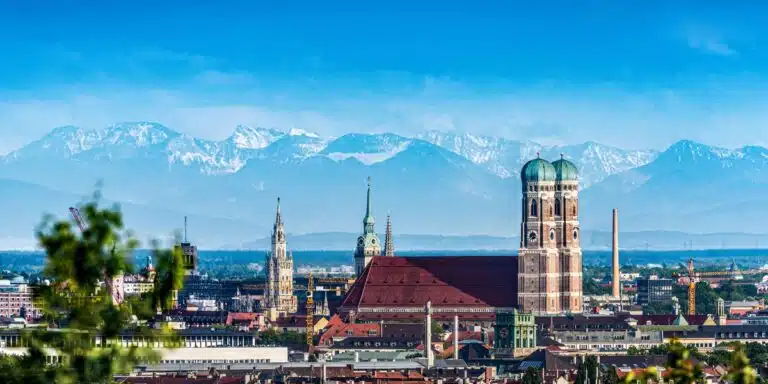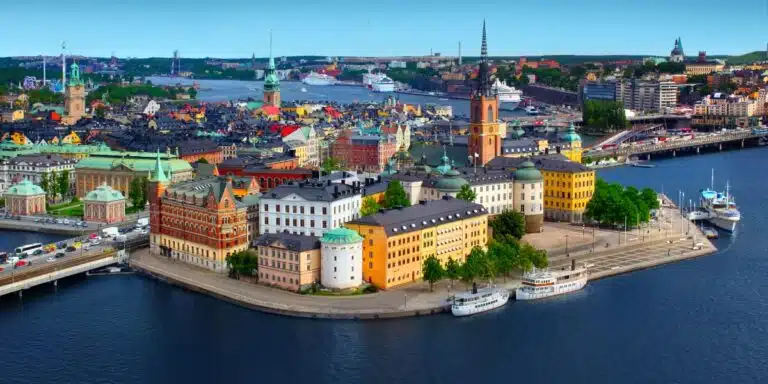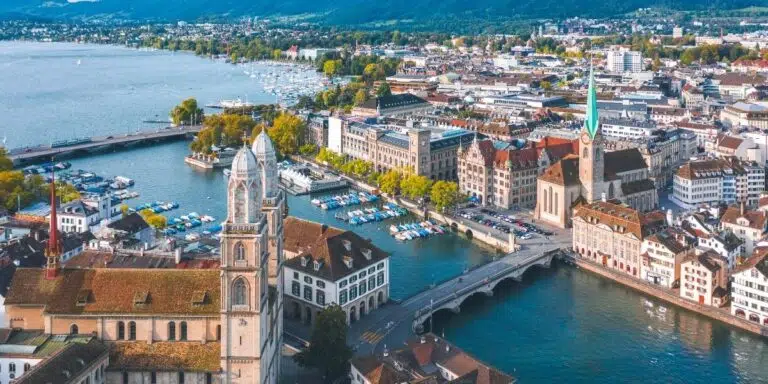This post may contain affiliate links, from which we earn an income. Click here to read our affiliate policy.
We don’t think there could be an easier city to explore in a day than Venice, also known as La Serenissima. This incredible city is the capital of northern Italy’s Veneto region and is built on more than 100 small islands in a lagoon in the Adriatic Sea.
In our one day Venice itinerary, you’ll find information and tips for visiting all the most important must-see Venice tourist attractions, with an interactive map, organised to make the best use of your time.
We also share recommendations for central places to stay, ideas about where to eat local food, and tips about how to make the most of Venice in a day.
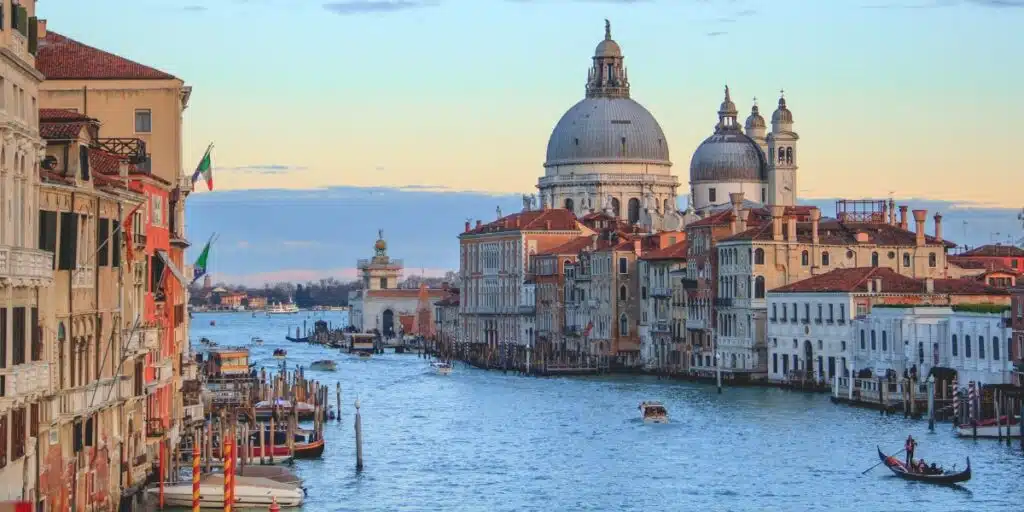
When to Visit Venice
Several times every year, between September and April, the sea level in Venice rises to flood the streets, squares, and palaces. While this occasional inundation, known as acqua alta, can be inconvenient, Venice has become adept at managing high tides and provides boardwalks in the main streets in order to allow people to move around.
Is this your first time visiting Italy? Get all the information you need in our Italy Travel Guide, including what to pack, the best time of year to go, getting there and practical tips to help you have the best trip!
Spring
In the spring, Venice starts to defrost, with temperatures rising from 12ºc/54ºf in the latter half of March to the low 22ºc/72ºf in May. In the early part of spring, you will definitely need to pack warm clothes and an umbrella, as March can bring quite a bit of rain.
May is considered one of the best times to visit Venice. The weather is lovely, the city has yet to be overrun with tourists and all the attractions are open. Landmarks such as St Mark’s Square would still be better visited early in the morning, to beat the crowds.
The Biennale Art and Architecture Exhibition normally runs from April to November. On even years the exhibition focuses on art, on odd years, it is dedicated to architecture. The city is filled with exhibitions, installations and various types of events for you to enjoy.
Summer
Summer is the peak season for tourism, with costs at their most expensive. As there are no roads in Venice, the waterways are crammed with gondolas and the streets are filled to bursting with tourists. The weather is also at its most humid and because of the waterways there can be quite a lot of bugs, and the occasional canal smell as the water dries out
August is when Venice is at its hottest, and many of the locals have packed up and left the city for the month for the almost countrywide Italian summer holiday.
One of the most famous activities in the summer is the Jazz Festival. From June to the end of August, there are musical performances from all over the world, as well as many other events. They are held at locations all over the city, such as St Mark’s Square, the Sala Apollinne, The Teatro la Fenice and the Pallazzo Grimani.
Fall
September is still quite warm, and the number of tourists has dropped, so it’s a great time to spend a day in Venice.
The annual Venice Film Festival takes place as well as the annual Regata, or Regata Storica, which is held on the Grand Canal on the first Sunday of September and commemorates the history of Venice. This festival has been held in the Venetian lagoon for hundreds of years and today is well-known for the wonderful historical water pageant that takes place before the race.
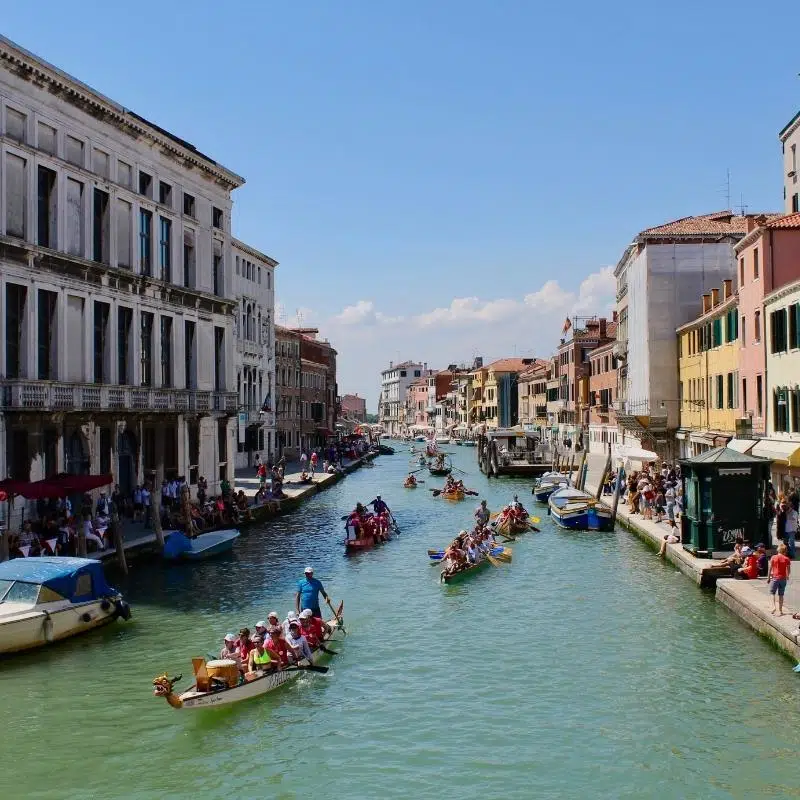
Winter
The temperature gets cold in November, so make sure you pack warm clothes, especially if you want to enjoy a romantic gondola ride or take a water bus. The city will be less busy, and cheaper for a visit, however, some landmarks and attractions may keep shorter hours, so make sure you check beforehand.
February is all about the Venice Carnivale, one of the biggest celebrations in all of Italy. It takes place in Venice 40 days before Easter, with a final party before Ash Wednesday and Lent. The events typically last for two to three weeks before the actual Carnival Day on Shrove Tuesday.
A lot of events will require an invite or ticket which can be costly, but there are also many events that are free, such as the candlelit parade of boats. There are also street performers and concerts for the public to enjoy. The finale is held in the main public square of St. Mark’s, where you will get to see all the amazing masks and costumes. If you would like to visit Venice for Carnivale you will need to book well in advance as the city will be very busy for this period.
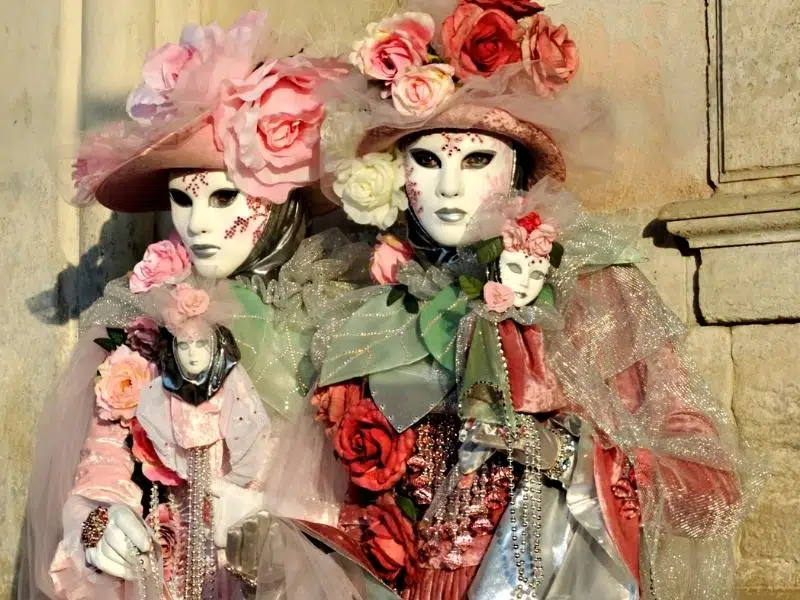
Are you planning a road trip in Italy? Get our Italian bucket list road trip guide for maps, itineraries, accommodation + places to see/things to do en route and nearby attractions so you don’t miss a thing!
Venice Trip Resources
Flying
Fly into Marco Polo or Treviso Airport
Driving
Drive in from Europe or hire a car in Italy
Travel Insurance
Cover medical costs, delays and lost luggage
Getting to Venice
Flying
When flying to Venice you can land at one of two airports Marco Polo Airport, which is 8km from the city, or Treviso Airport which is 33km away.
There are several different ways to get to the city from Marco Polo Airport. You can go by express bus, No5, or the shuttle bus No35, both can be picked up in the second lane outside the arrivals terminal. They leave every 15 minutes and take around 25 minutes to get to Piazzale Roma terminal. You can buy your express bus tickets here.
If you want to make your arrival in Venice unforgettable take a water taxi directly from the airport to your hotel, an amazing way to start your visit.
The best way to get to Venice from Treviso Airport is by bus, you can catch the bus in Via Noalese, to the right of the airport exit. It takes about 50 minutes, you can buy your express bus tickets here.
You can also book a private transfer from the airport with Klook directly to your accommodation in the city. Klook works with a large range of local operators to bring the the best options and prices for your transfer.
Planning your car rental in Italy? Find out all you need to know about hiring a car and driving in Italy and if you’re planning on driving to Italy from the UK, find out how and get all the best routes here!
Where to Stay in Venice
Luxury: Sina Centurian Palace – Booking.com | Agoda
Mid-Range: Palazzo Veneziano- Booking.com | Agoda
Budget: Hotel Saturnia & International – Booking.com | Agoda
Hostel: Combo Venezia – Booking.com | Agoda
What to See & Do in Venice
Our Venice in one day itinerary is very walkable, and you’ll be able to complete the route without needing public transport. As Venice is a relatively small city, you can see a lot in a short amount of time.
When visiting Venice you will notice there are no roads, just canals and bridges. The city has 417 bridges, 72 of which are private, and 177 canals. The largest of these is the Grand Canal, which runs in an S shape, splitting the city in half.
The city is divided into six districts or sestieri – Cannaregio; Dorsoduro; San Polo; San Marco; Santa Croce and Castello.
If you prefer to have your day organised for you, check out this popular and highly-rated private guided walking tour, where you’ll explore the charming streets of Venice and admire some of the city’s most famous landmarks as you discover the city’s history and culture alongside an expert guide.
Is this your first time visiting Italy? Get all the information you need in our Italy Travel Guide, including what to pack, the best time of year to go, getting there and practical tips to help you have the best trip!
Venice One Day Walking Map
How to use this map – Use your fingers (or computer mouse) to zoom in and out. Click or touch the icons to get more info about a place, and click the arrow in the box top left to open the index. To add to your own Google Maps account, click the star next to the title of the map.
Morning
Ponte della Paglia & Ponte dei Sospiri – Bridge of Sighs
Start your morning at the Ponte della Paglia. The original structure was built in 1360 and was the oldest stone bridge in Venice, the current structure dates back to 1847. This bridge will give you a fantastic view of the Grand Canal and the lagoon and looking the other way, the famous Ponte dei Sospiri or Bridge of Sighs.
The Bridge of Sighs is a fully enclosed limestone bridge which was built in the early 1600s and linked the prison to the interrogation rooms in the Doge’s Palace. It was described by Lord Byron as “the last point where condemned prisoners could see the beautiful city of Venice” before they were taken to be executed.
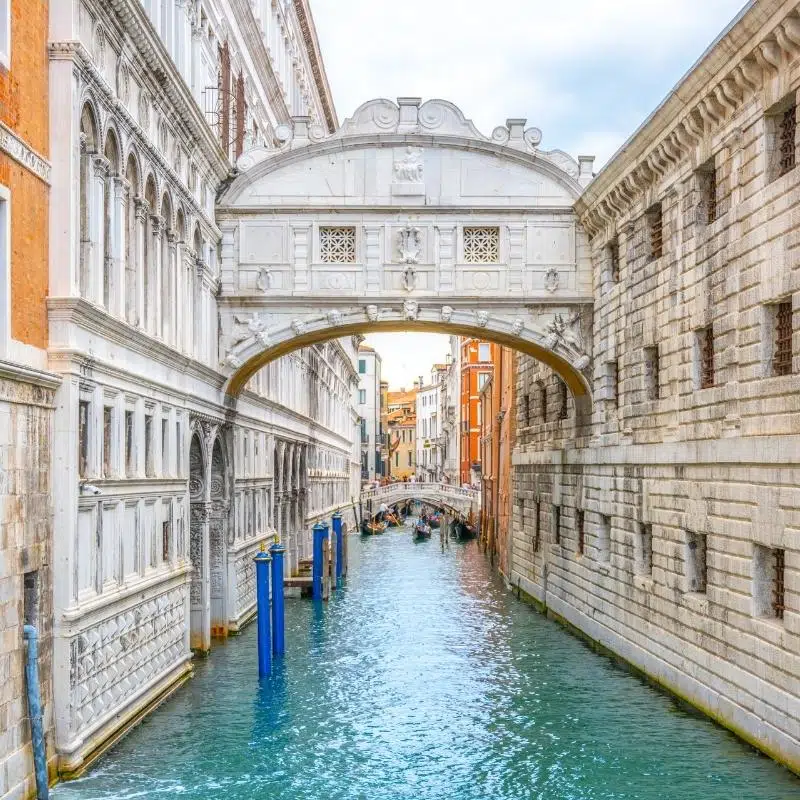
Palazzo Ducale – Doge’s Palace
The Doge’s Palace is one of the main landmarks in Venice and is a masterpiece of Gothic architecture. Made up of three blocks, the wing towards St Mark’s Basin is the oldest, built in 1340 and modified and extended throughout the following centuries.
The wing towards St Mark’s Square is still as it was built in 1424, and the canal side wing was built between 1483 and 1565, during the Renaissance.
The palace was the home of the Doge of Venice, who was the supreme authority of the former republic. It not only housed the Doge’s fabulous apartments but also a political office and a prison.
In the early 1600s, a new prison was built across the Rio del Palazzo and the prison and the palace were linked by the Bridge of Sighs. After the republic fell the Palace was used by many different administrations until it became a museum in 1923.
The Doge’s Palace is one of the top tourist attractions in Venice and is super busy for much of the year. Don’t waste time waiting in line when you only have one day to see the city! Instead, get a reserved entry skip-the-line ticket for the Doge’s Palace, with which you’ll also get to walk across the famous Bridge of Sighs.
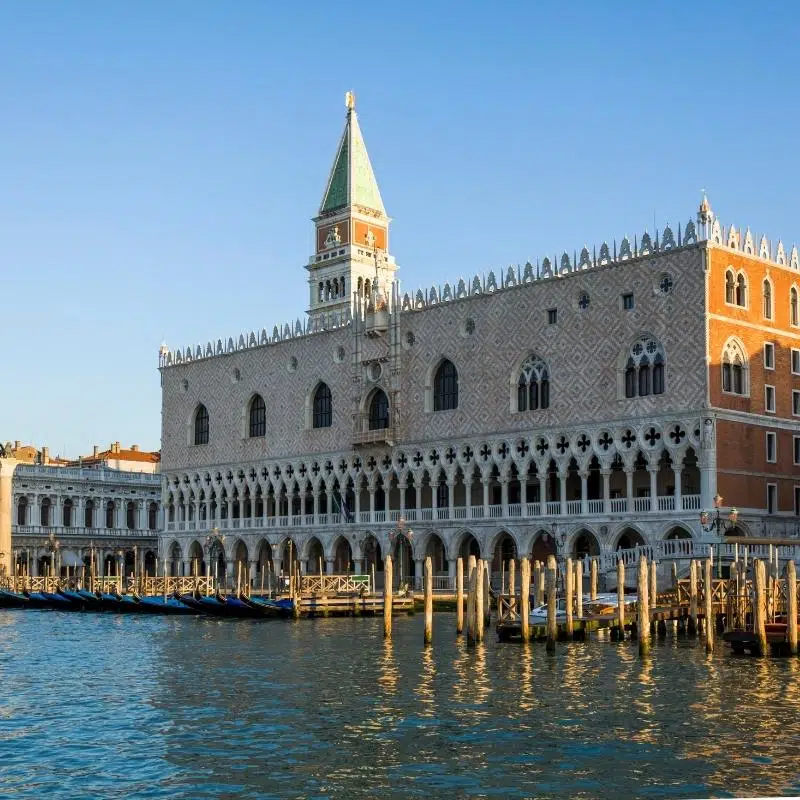
Piazza San Marco – St Mark’s Square
Walk along the Riva degli Schiavoni and you’ll come to St Mark’s Square, the most famous Piazza in Italy, if not the world. Home to some of Venice’s most impressive historical buildings, the square gets very busy so it’s advised to get there early to enjoy everything on offer without the larger crowds which congregate later in the day.
The square is lined with fancy stores, (overpriced) cafés and eateries and in the furthest corner from the water is the Museo Correr which houses objects and works of art that reflect Venetian culture, history and art. The Correr Museum entrance is included in your Doge’s Palace ticket.
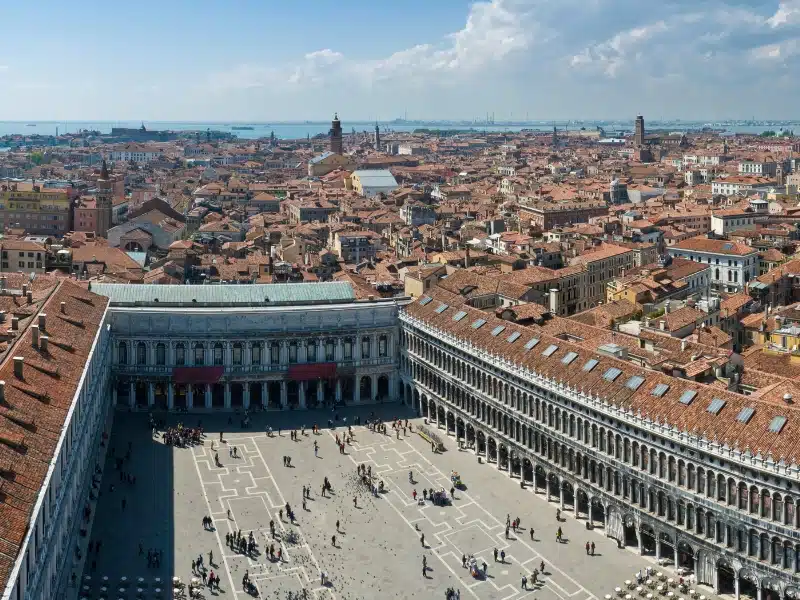
Basilica di San Marco – St Mark’s Basilica
Built by the Venetians in 820 and consecrated in 832, St Mark’s Basilica takes its name from the remains of the Saint preserved inside. In 828 merchants from Venice stole the body of St Mark the Evangelist, and transported the body via ship, but the ship was hit by a storm. The legend goes that St Mark appeared to the captain and told him to lower his sails, thus saving the ship.
When Constantinople was defeated in the Fourth Crusade, many treasures made their way to Venice and were installed in the basilica. The four bronze Horses of Saint Mark, also known as the Triumphal Quadriga or Horses of the Hippodrome of Constantinople, are just one example of the many treasures that came from Constantinople.
The church is also home to the high altar table Pala d’Oro, considered one of the most amazing works of the Byzantine era and the jewel in the crown of the Basilica.
The interior of the domes, the vaults, and the upper walls were slowly covered with gold-ground mosaics depicting saints, prophets, and biblical scenes. Many of these mosaics were later retouched as tastes changed and together they now represent eight hundred years of history.
Another of Venice’s most popular attractions, it’s advisable to book your fast-track entry and audio guide for St Mark’s Basilica online in advance of your visit.
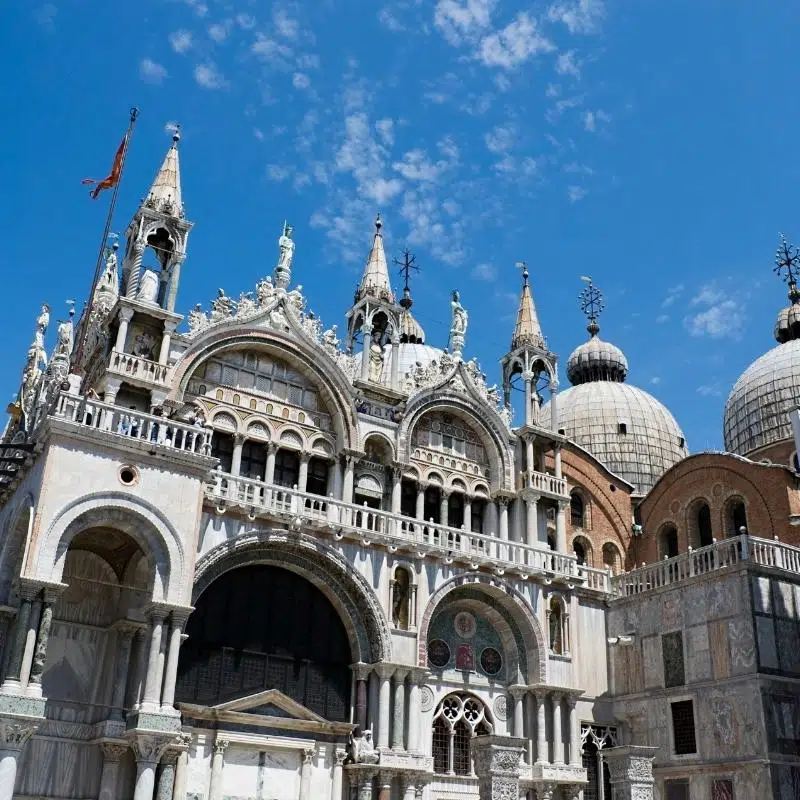
Campanile de San Marco – St Mark’s Campanile
St Mark’s Campanile is the bell tower for St Mark’s Basilica. Built in the 12th century on the site of what was probably a watchtower and rebuilt in its current form early in the 16th century with the addition of a belfry, the campanile is the perfect spot from which to enjoy a spectacular bird’s eye view of the city and Venice lagoon.
In fact, the view was so good that the campanile was used in 1609 by Galileo to demonstrate his telescope to the Doge!
In 1902 the campanile suddenly collapsed as a result of bad construction work and it was agreed that the tower should be rebuilt exactly as it was. The rebuild started in 1903, and the campanile was re-opened in 1912. When visiting the tower, you get to the top by elevator, which only takes 30 seconds so there’s no need to climb a whole lot of stairs!
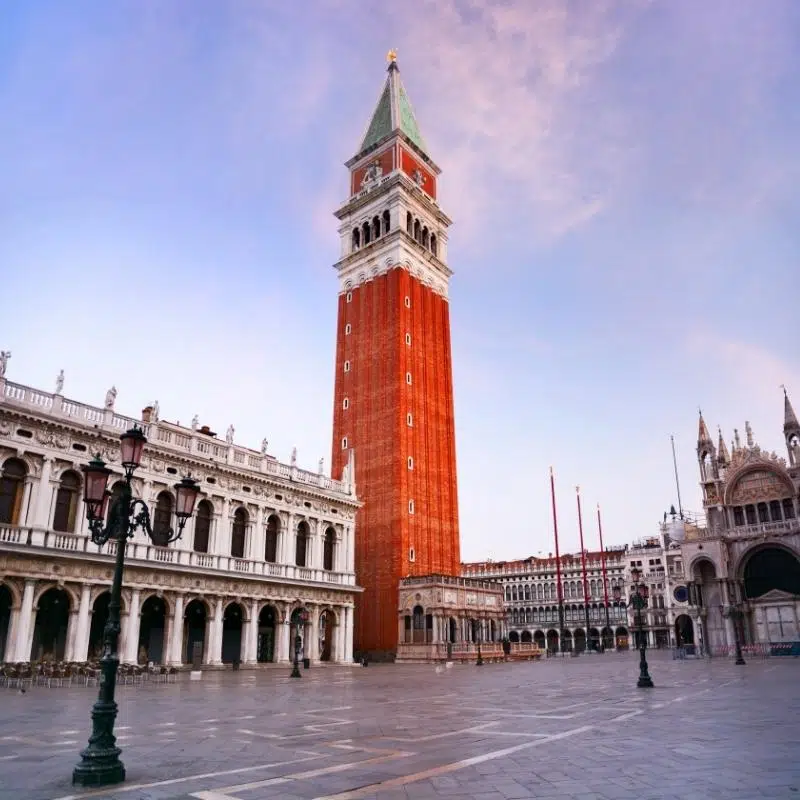
Libreria Acqua Alta
Literally meaning ‘the book store of high water’, this hidden gem is an indoor/outdoor bookshop which protects its stock from the famous floods of Venice using ingenious means!
Stacked wall-to-wall with books, magazines and maps, Libreria Acqua Alta stores the books in boats, waterproof containers, bathtubs and even a full-sized gondola!
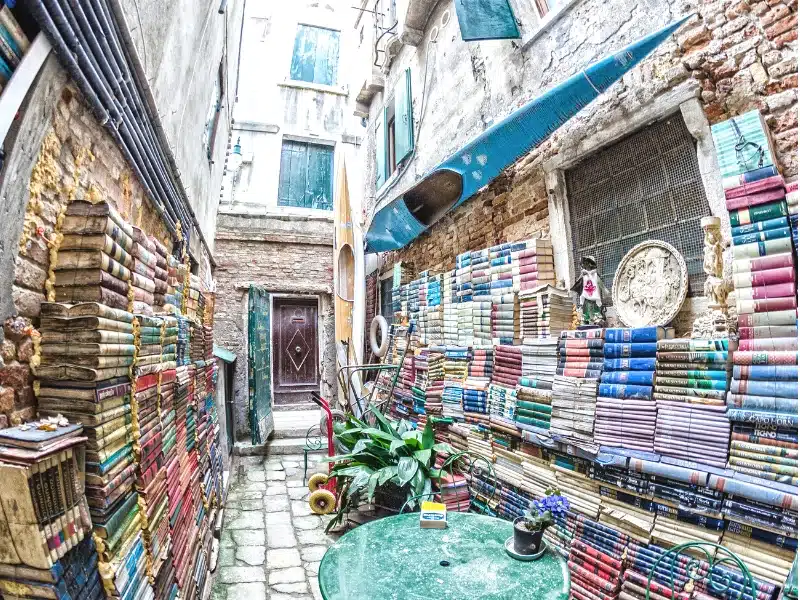
Ponte di Rialto – The Rialto Bridge
The iconic Rialto Bridge is the oldest bridge spanning the Grand Canal. It connects the districts of San Marco and San Polo and has been rebuilt several times since its first construction as a pontoon bridge in 1173. Whilst there visit the Mercati de Rialto or Rialto Market and look at the amazing array of fresh foods on display.
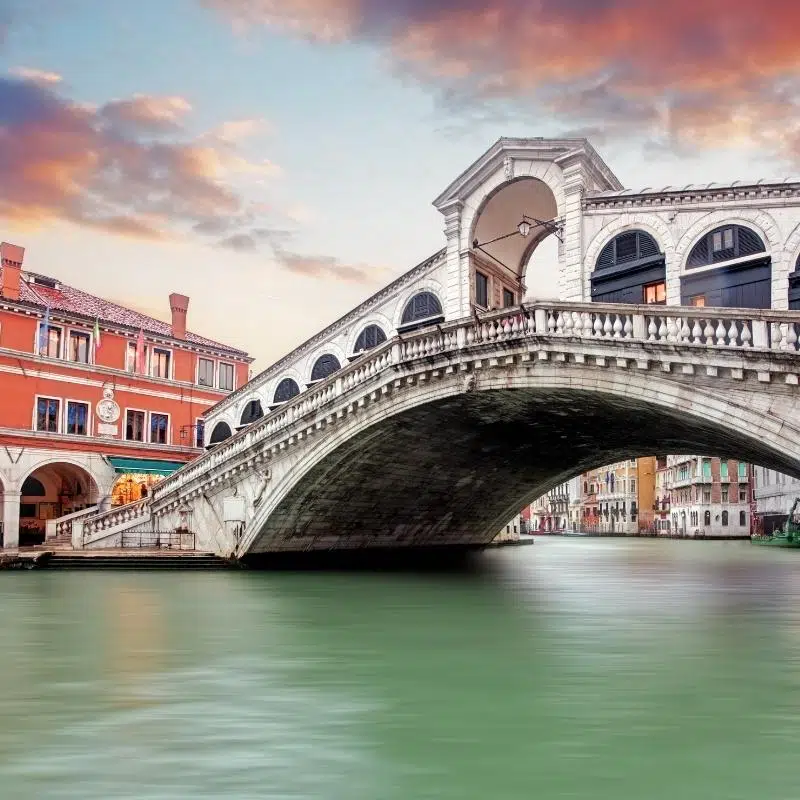
Ca’ Pesaro International Gallery of Modern Art
The incredible Ca’ Pesaro museum is housed in a marble palace on the Grand Canal and is a magnificent example of the Venetian Baroque style. The façade is an imposing edifice of statues and bas-reliefs, while the interior is magnificently decorated by Giovanni Battista Pittoni.
The museum has a fabulous collection of 19th and 20th century paintings and sculptures, including works by Morandi, De Chirico, and Carrà, as well as Kandinsky, Mirò and Matta.
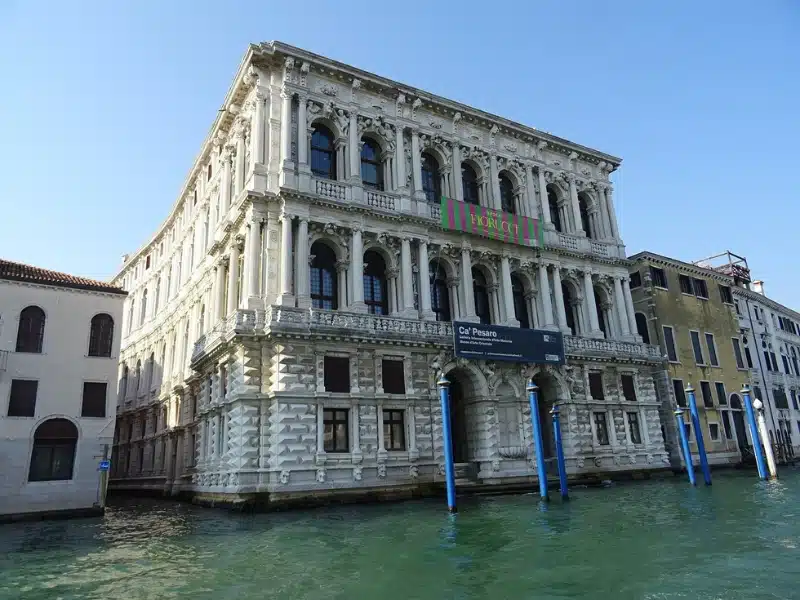
Afternoon
Casa Di Carlo Goldani – Carlo Goldani’s House
Carlo Goldoni was a famous Venetian playwright who dedicated his life to the theatre, starting as a small boy aged eight, with puppets in a small theatre at his home. The home is now a writer’s museum and well worth a visit.
Goldoni’s theatrical work consists of five tragedies, sixteen tragicomedies, 137 comedies, two sacred actions, twenty interludes, thirteen dramas, 49 playful dramas, three farces and 57 scenarios!
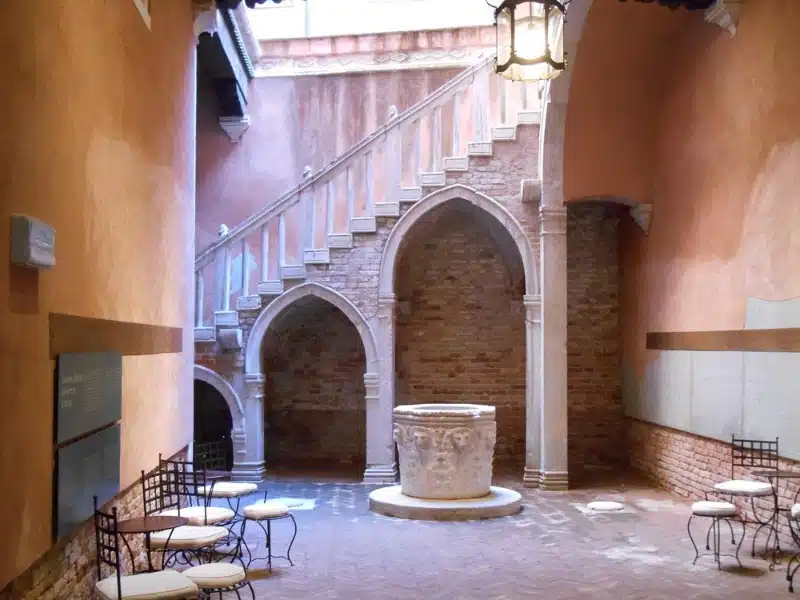
Basilica De Frari
Basilica De Frari in the San Polo neighborhood is also known as the Basilica Santa Maria Gloriosa and is one of the most remarkable churches in Venice. Built over a period of 100 years in the 15th century the exterior is pretty plain compared to some of the other churches in Venice, but step inside to see some amazing sculptures and a famous painting by Titian called ‘Assumption of the Virgin’.
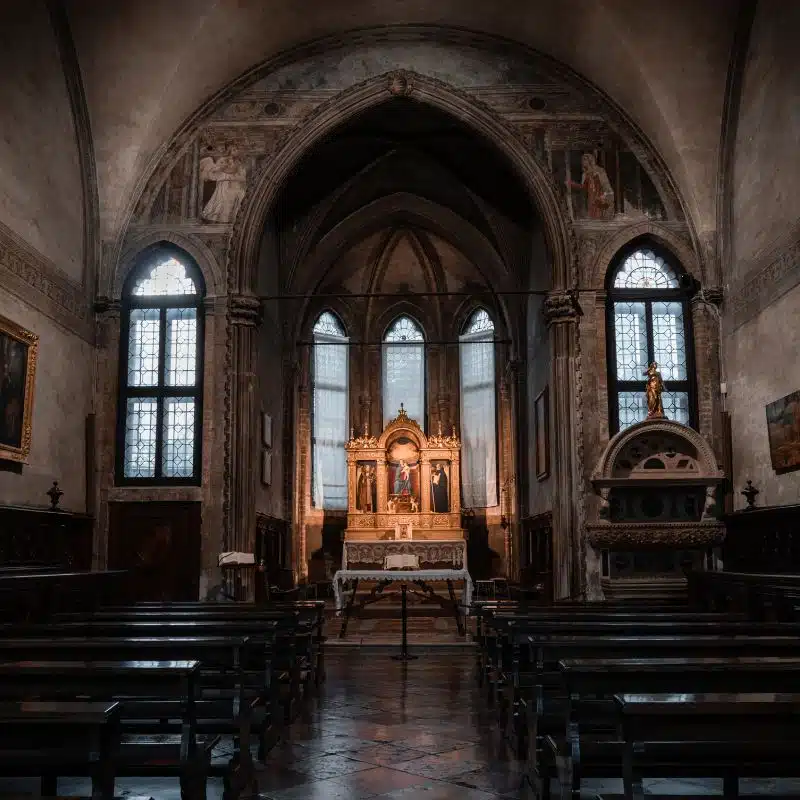
The Migrant Child by Banksy
It may not be thousands of years old or hold any historic significance, but it’s still a really cool piece of artwork by Banky in reference to the plight of migrants and refugees, stencilled onto the wall of the canal on the island of Dorsoduro.
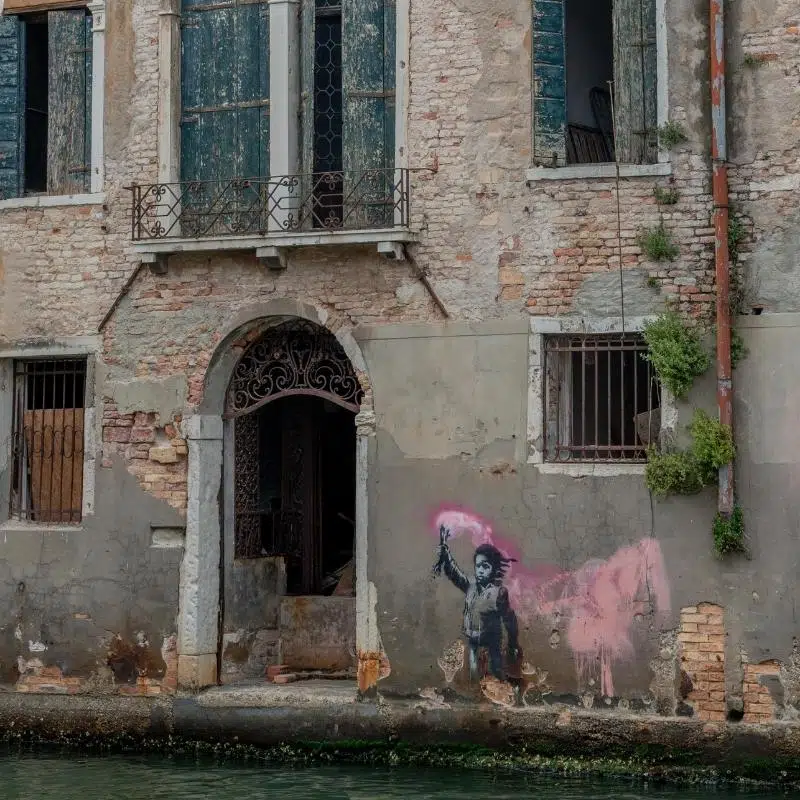
Museo di Leonardo Da Vinci – Leonardo Da Vinci Museum
Housed in a beautiful former church, this museum dedicated to Da Vinci is quite small but interactive, so it really is a unique experience. They have replicas of Da Vinci’s masterpieces so you can really get up close and look at them in detail without the need for high security. They also have replicas of his inventions which you can touch and try.
This family-friendly exhibition will stimulate your curiosity and allow you to really explore Da Vinci’s groundbreaking work. Stroll through the four sections of earth, water, air and fire, and discover machines built according to Da Vinci’s original designs. This excellent museum gets very busy in high season, so make sure to get your skip-the-line tickets before visiting.
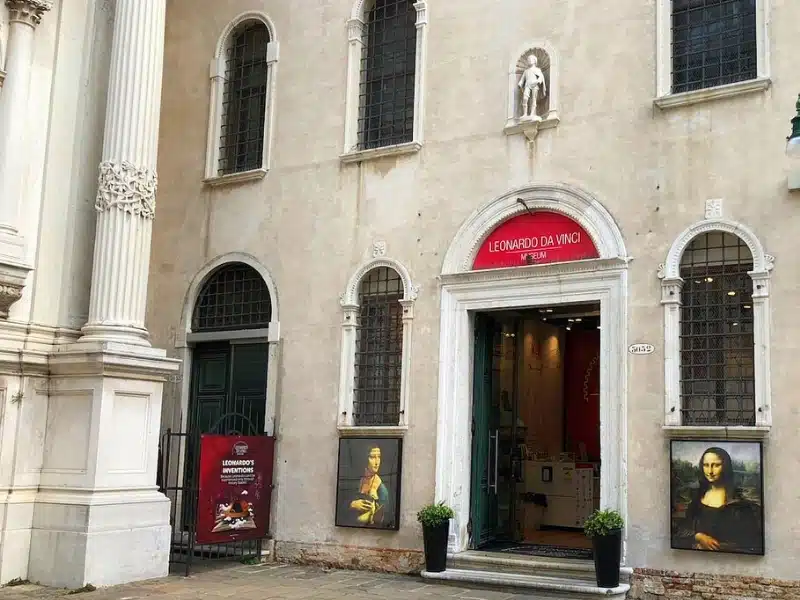
The Peggy Guggenheim Museum
The Peggy Guggenheim Collection is located on the Grand Canal between Santa Maria della Salute and the Gallerie dell’Accademia, in the Dorsoduro district. It is one of Europe’s premier museums devoted to modern art, and one of the most visited attractions in Venice.
The core of the museum is Peggy Guggenheim’s personal collection of 20th century art ranging in style from Cubism and Surrealism to Abstract Expressionism.
Explore one of the most important cultural attractions in Venice with a skip-the-line ticket, so you can enjoy works of modern art by Picasso, Pollock, and Dalí instead of standing in a queue!
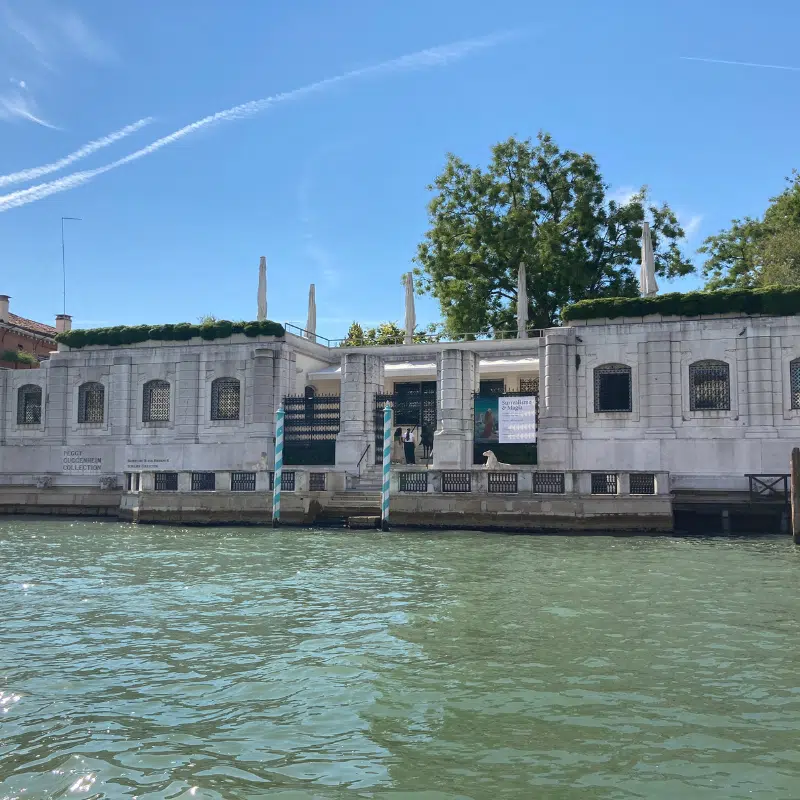
Basilica di Santa Maria della Salute
The basilica, known simply as Salute, is a Roman Catholic Church commissioned by the city as a prayer and as a thank you to the Virgin Mother of God for saving the city of Venice from the terrible plague of 1630. The first stone was laid on 1st April 1631 and it was consecrated in 1687.
The basilica faces the entrance of the Grand Canal and the amazing double dome has characterized the skyline of the San Marco Basin in Venice for more than three hundred years.
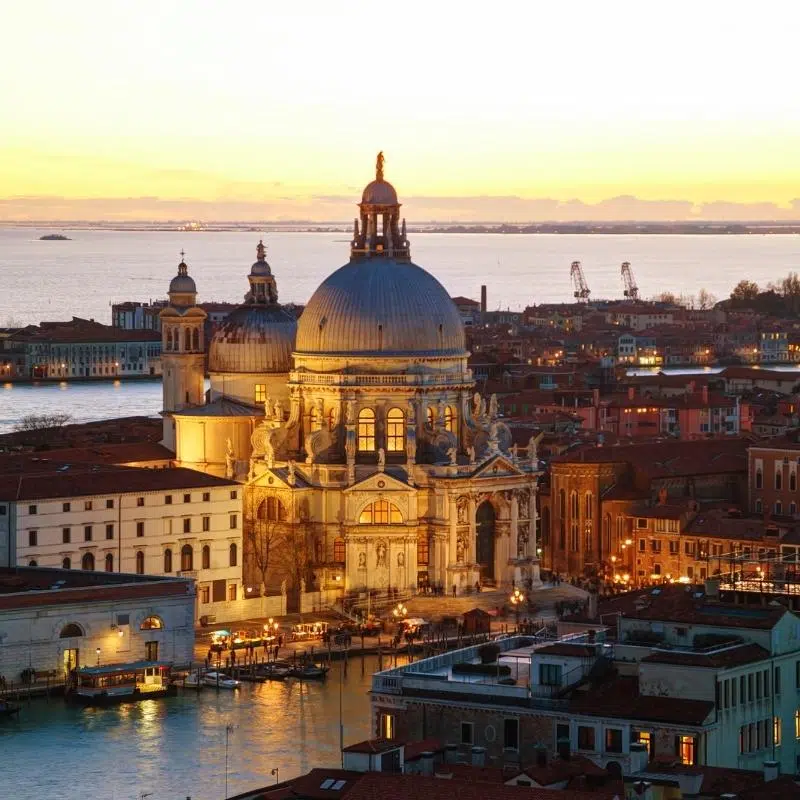
Evening
Grab a Cicchetti & Ombra in Dorsoduro
Head to the Dorsoduro district, home to Venice University, which is quieter and less touristy than the other districts in Venice, so prices are much more reasonable.
There are many small Bacari bars to try here, which serve the typical Venetian aperitif of an ombra (small glass of wine) and a cicchetti. You can even do a Bacari crawl, where you can eat a cicchetti, a small snack much like a Spanish tapa, with a glass of local wine.
The Cantina Schiavi is an amazing experience – the walls are covered in bottles of wine, and they serve fresh cicchetti on the side. There are no seats, so take your aperitif outside to watch one of the city’s last gondola shops at work.
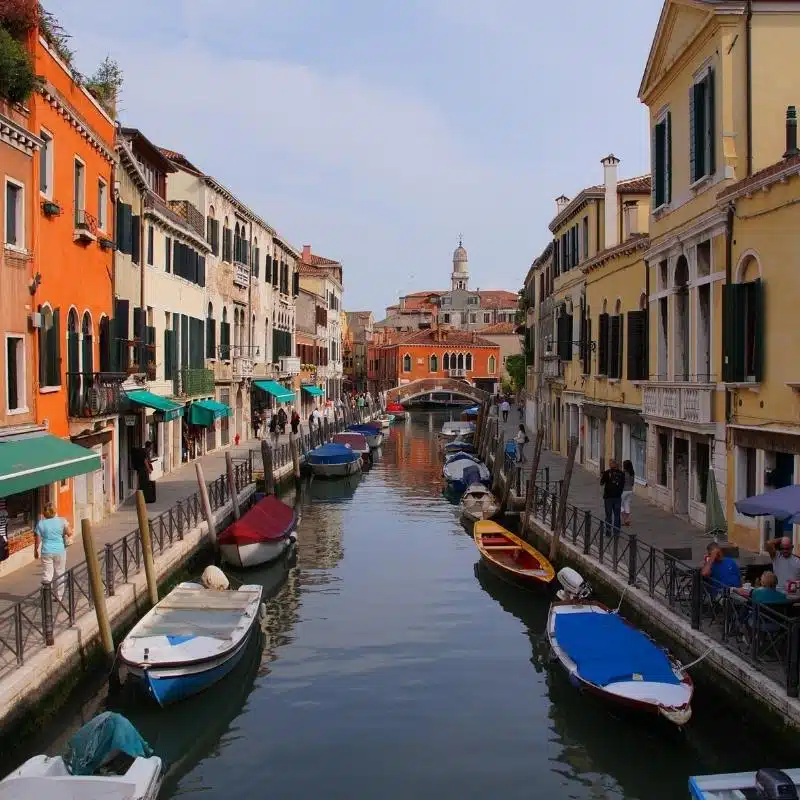
Take a Nighttime Gondola Ride
What could be more fun or romantic than an evening gondola ride to see Venice from the water while you float down the majestic Grand Canal to spot Venice’s top sights in the moonlight?
Trying to catch a gondola and then negotiate the price can be a stressful experience, and you risk paying over the odds to enjoy this quintessential Venetian experience. Pre-book a private gondola ride so that you can just arrive, board and enjoy floating along the gorgeous Venetian canals.
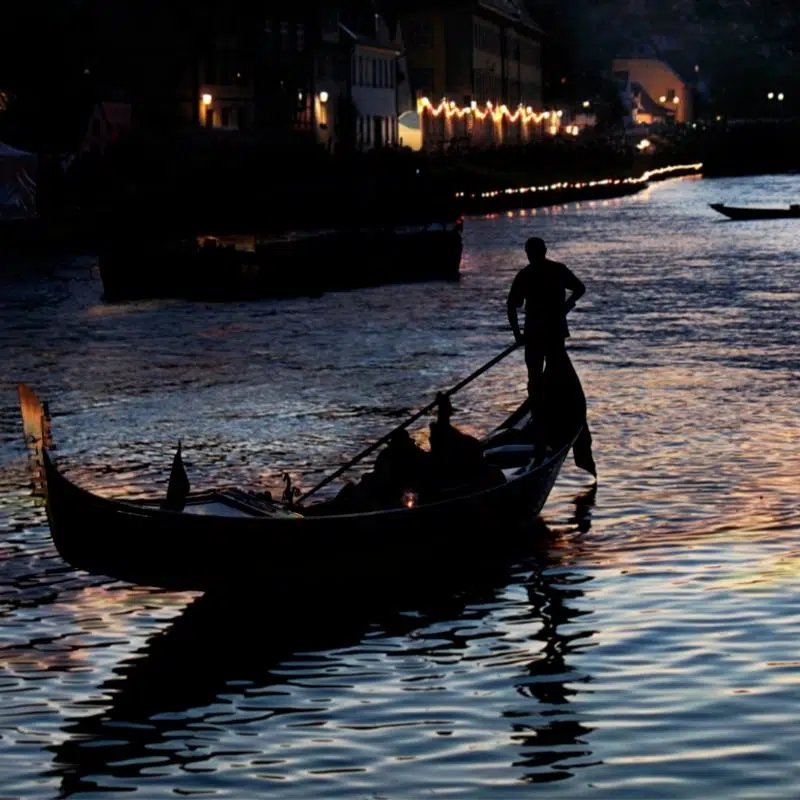
Have Amazing Cocktails at Taverna Al Remer
Just a stone’s throw from the canal and a great nighttime view of the Rialto Bridge is the Taverna Al Remer. This is a fantastic location for a late-night cocktail, sit inside at the very cool bar or in the summer months outside in the small Piazzetta with a view of the canal and molo, the broad stone quay that was once the ceremonial landing spot for great officials and distinguished visitors.
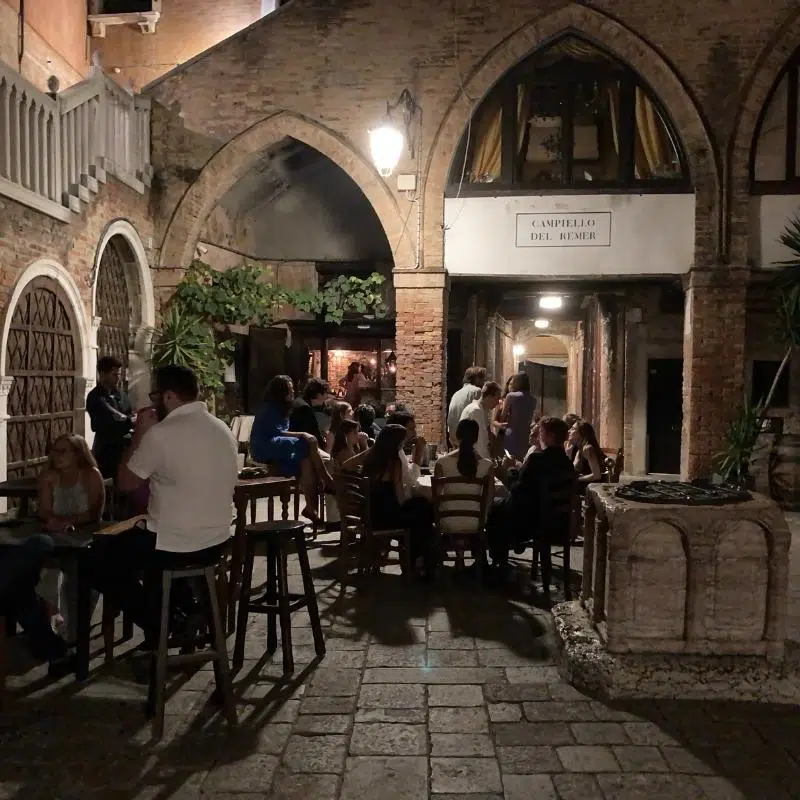
Other Italian Travel Guides
Where to Eat in Venice
All’ Arco
Head to All’ Arco for lunch, this is a tiny restaurant with only three tables, but you can eat standing up outside and they offer an amazing selection of meat and fish cicchetti.
Boccadargento
Boccadargento is a wonderful restaurant off the beaten track serving authentic Venitian food. They don’t have a website but I can tell you from personal experience the food is excellent and the service great.
Osteria Alla Fresca
Osteria Alla Fresca is another wonderful traditional Venetian restaurant, with a great price point to boot. Head to this small osteria away from all the crowds and tourists and sit under a canopy of vines and enjoy the wonderfully fresh food.
Osteria Giorgione Da Masa
If you feel like something slightly different, then Osteria Giorgione Da Masa could be the place for you. A fusion of Japanese and Venetian cuisines, that includes ramen and cicchetti. There is also a very reasonably priced tasting menu, which can be made allergen and gluten-free if requested before ordering.
Street Food Tour with a Local Guide & Tastings
If you want some expert guidance in Venetian food, eat your way around Venice on a tasting tour of some of the city’s eateries with a foodie guide, and see historical monuments along the way!
This highly rated Venetian street food tour will take you from the historic Rialto Market alongside the Grand Canal to Campo San Polo for the Basilica dei Frari and Campos San Bartolomeo before arriving at Campo Santa Margherita square, which is surrounded by local restaurants and farmers’ markets. You’ll learn about the districts and historical monuments you pass by and get to taste the food of Venice.
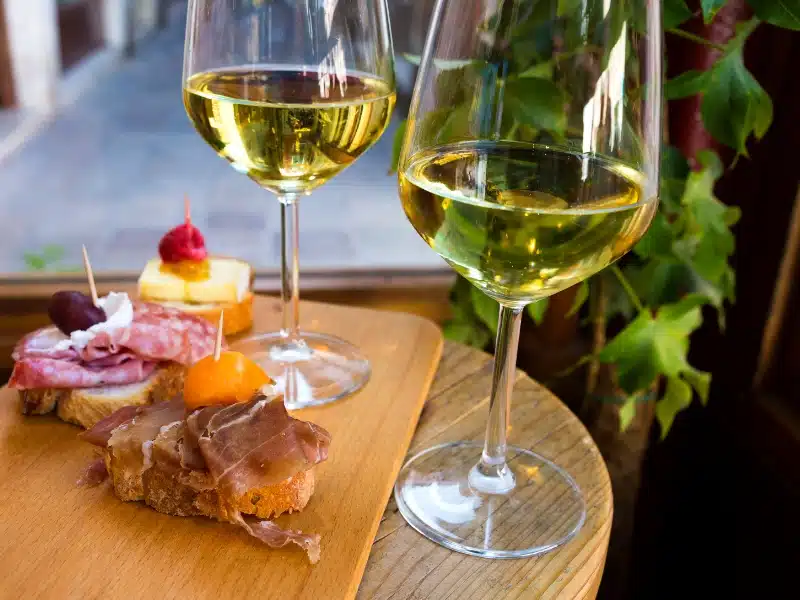
Top Five Venice Travel Tips
- Make sure you start your day early to try and avoid the crowds as much as possible. The city with its narrow streets gets very busy and the going can be slow going when walking.
- Always ask about prices before getting a water taxi or a gondola as they can be expensive. You could always take a shared gondola ride or shared water taxi to help with cost. Or you can get the water bus, which offers a similar (but not quite!) experience, and the tickets can be purchased in advance for less than a tenth of the cost of a gondola ride.
- Do not sit down to eat or drink a coffee in St Mark’s Square, unless you are a millionaire! They way overcharge here, and there are much nicer, off-the-beaten-path places which offer a more authentic experience.
- Before travelling to Venice invest in a City Card and enjoy the city to the fullest, saving money at the same time. The Venice Museum Pass is valid for 180 days once you have exchanged it, you take your electronic voucher and exchange it in one of many locations in the city for the official Venice pass. This pass will gain you entry to the Doge’s Palace, the Correr Museum and another ten civic museums of your choice. This is also a skip-the-line pass, so you will get to see more of these amazing attractions.
- Keep vigilant about your personal space and belongings, pickpockets operate all over Venice and prey on tourists in particular.
More Than 1 Day in Venice
Take the Train to Conegliano
Conegliano is a wonderful town that sits in the foothill of the Dolomites and is the heart of the Prosecco region, just 35 minutes by train from Venice. Once there you can see the works of Giovanni Battista Cima, one of the famous Italian Renaissance artists, at Casa Cima.
Take a walk up to the castle and have a glass of local Prosecco as you admire the view of the Dolomites all the way to the Venice lagoon. This is definitely one place that should be added to your Italy bucket list.
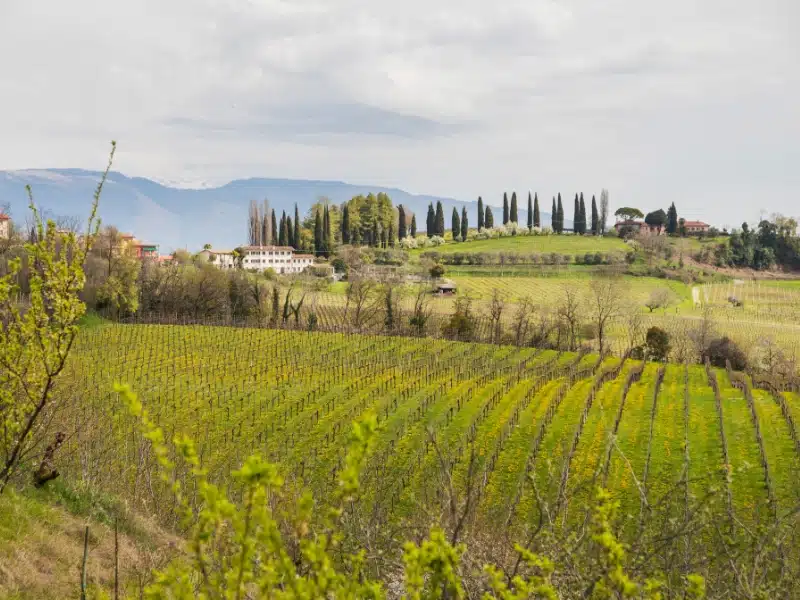
Visit Sant’Erasmo – St. Erasmus Island
St. Erasmus Island is the largest of all the islands in the Venice lagoon, and is often referred to as ‘the vegetable garden of Venice’. This is a place to get out of the hustle and bustle of the city and get back to nature. As well as growing vegetables on the islands there are also vineyards
The island is rich in orchards and vineyards and is very famous for the violet artichoke of Saint Erasmo, a variety that grows only on the island. They are a real delicacy and are only available locally for 10-15 days a year.
You can also see the Massimilania Tower, built between 1843 and 1844, it was erected during the French and Austrian occupation for defending the lagoon. Now its used for cultural events and photography exhibitions.
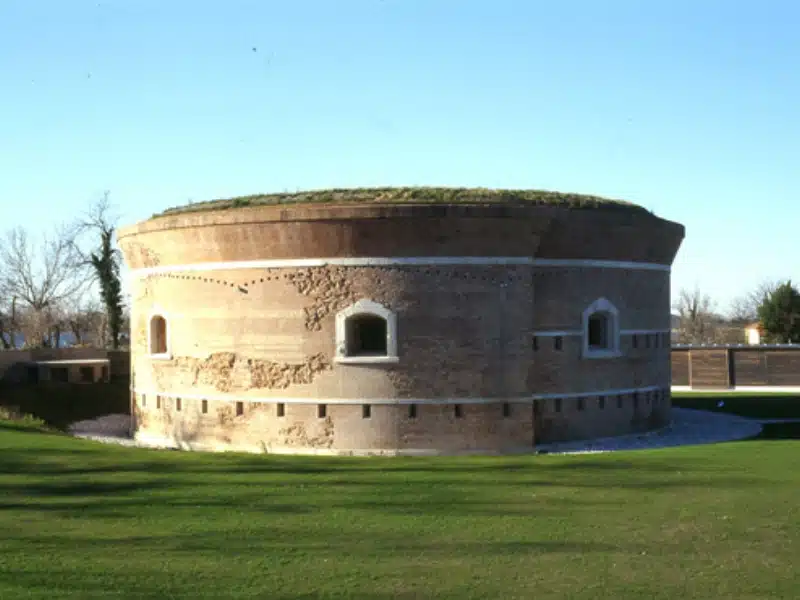
Burano, Murano and Torcello Boat Tour
If you take one day trip from Venice, make it this highly recommended and well-organised tour.
Depart from Venezia San Marco and get the five-star treatment as you ride by boat to the islands of Murano, Burano and Torcello. Visit Murano and find out why the island is renowned for its glassworks with a visit to a local glass factory, then watch a skilled artisan during a glass-making demonstration before exploring the glass shops on the island.
Next, head for Burano, which is known for its brightly painted houses and lacework. Follow your guide to the heart of the town and have time to explore the lace museum and enjoy a coffee.
Sail to Torcello, the first center of civilization in the estuary. See the Venetian-Byzantine mosaics at the Basilica di Santa Maria Assunta and discover the 10th century Torcello bell tower.
With a professional guide to offer insights, an organised tour is the perfect opportunity to see more of Italy in less time!
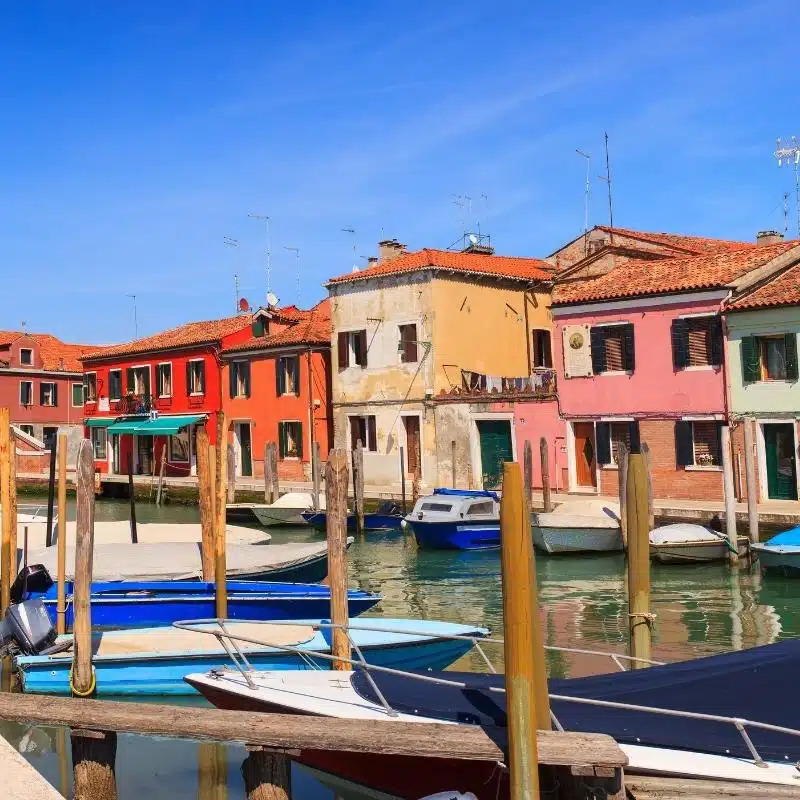
Are you looking for more one day city itineraries? Check out these top posts…
Prague One Day Itinerary + Map, Tips & Guide
Amsterdam One Day Itinerary + Map, Tips & Guide
Belfast in A Day: Itinerary, Map & Tips
One Day Munich Itinerary + Map, Tips & Guide
Stockholm One Day Itinerary + Map, Tips & Guide
One Day in Zurich – Itinerary, Map, Tips & Guide
Love it? Pin it!
